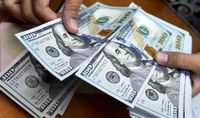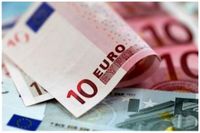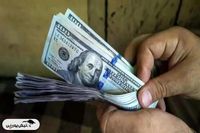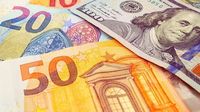On February 5, 2025, the Iranian Exchange Center reported a stable dollar price, with the exchange rate for each US dollar holding steady at 70,688 Tomans. This figure remained unchanged compared to two days prior, marking a period of relative stability in the currency market.
In contrast, the Euro experienced a notable increase, climbing to 77,857 Tomans, which reflects a rise of 1.32% from the previous exchange rate. This upward trend in the Euro price could be indicative of shifting economic factors influencing currency valuations.
Meanwhile, the British Pound saw a decrease, trading at 134,240 Tomans, down by 2.46% from two days ago. This decline raises questions about the factors contributing to the fluctuations in the pound's value against the Tomans.
Additional currencies also saw varying rates on the same day. The UAE Dirham was unchanged at 19,248 Tomans, while the Turkish Lira increased slightly to 2,740 Tomans, up by 0.36%. In contrast, the Canadian Dollar was traded at 398,049 Tomans, reflecting an increase of 1.61%.
Further insights into the market reveal that the Australian Dollar was priced at 62,900 Tomans, which marked a significant increase of 5.83% compared to its rate two days earlier. This surge in the Australian Dollar could suggest a strengthening economy or increased demand for Australian exports.
The Iraqi Dinar also maintained a stable position in the domestic market, trading at 71 Tomans. This consistency in the Dinar's value may be a result of steady economic conditions in Iraq.
In the broader context of foreign exchange, the Central Bank of Iran provided an overview of currency values on February 5, 2025. This included the Swiss Franc at 660,743 Rials, the Swedish Krona at 56,617 Rials, and the Norwegian Krone at 52,738 Rials. Each of these currencies reflects the complex interplay of international trade, economic policies, and market sentiment.
As the Iranian economy navigates through these fluctuations, analysts are closely monitoring the implications of currency stability and volatility on import and export dynamics. The stability of the dollar, juxtaposed with the rising Euro and fluctuating pound, could influence trade agreements and economic forecasts.
Moreover, the exchange rates of various currencies are crucial for individuals and businesses engaged in international trade. A stable dollar can benefit importers, while a rising Euro may impact exporters who trade with European partners.
In summary, the currency market on February 5, 2025, presented a mixed picture, with the dollar stabilizing, the Euro climbing, and the pound declining. These movements reflect ongoing economic trends and the intricate relationships between global currencies.
As the market evolves, stakeholders are advised to stay informed about these changes, as they can significantly impact financial planning and investment strategies.










